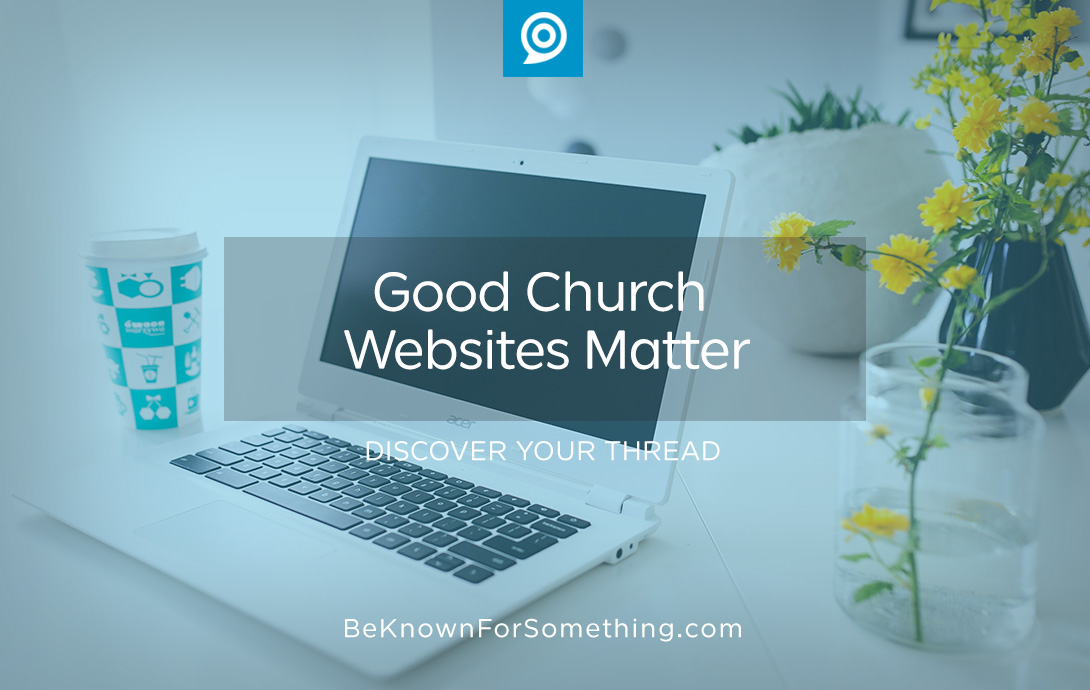Good Church Websites Matter

“It’s the front door to your church”. At least that’s what many are saying. But is it? Let’s make sure we understand our audiences first. Because they find this front door differently and open it for different reasons too.
Every church has an internal audience (congregation) and an external audience (community). Our role as the church is to reach both audiences. But we do it so differently! But with our website.
The church website should be the center of all communications. A digital hub if you will. That way all messaging and promotion should rely on it. Bulletins, social media, announcements, and ministries should point towards your website. Why? Because secular communication has done it so well that our audiences all know (by second nature) that if they haven’t picked up all the details, they can always find what they’re looking for on your website. The community trusts websites and desire them more than print.
Your church website will have more congregation coming to it than the community. So, in order to deliver what they’re looking for (and what you want them to know), you have to make sure the website is 1) well organized, 2) simple interface design, and 3) edited content so they don’t have to read (yes, you read that correctly, most people resist reading paragraphs online and are just looking for facts and details as they scan).
Most of your community doesn’t know that you have content for them. However, if your congregation is doing a good job at inviting and letting them know the church has a benefit for them, they’ll check out your website before they ever decide to attend the service. They also need the site to be 1) well organized, 2) simple interface design, and 3) edited content. Why? Because that’s what makes a website inviting and informative.
Since your congregation is the majority audience for the website, ensure you supply them with what they’re looking for and make it friendly for “outsiders” from the community to discover information.
Interestingly, both groups tend to look for similar content on the surface:
- A great Staff page. The congregation needs to contact leaders and they tend to visit here often. Community also looks here to see if the leaders look like them and they assume the leaders look like the Congregation. Make sure you do whatever you can to look professional, current, and representative of the community. Oh, and have an easy way to email or call each person.
- Service Times and Directions. Both groups tend to look at this to determine if, when, and where they’ll attend. Make this work seamlessly with a mobile device for map apps.
Then there’s different content between the 2 audiences. It’s key to have both areas well-tuned:
- Congregation: “What’s in it for me?” is the question. “Upcoming Events”, is the answer.
- Community: Your About page should be a general overview of who you are, what you believe, and why people attend. Then make sure it leads to various areas of the website!
It is your front door. And like your church door, few will find it in your community. It’s up to you to have it in great shape, and representative of your church brand, when they finally need the door.
Want 25 Game-Changing Resolutions?
Related Posts

Christmas Church Communication Strategy: 3 Nativity Lessons
Christmas isn’t just another event on the calendar; it’s a strategic opportunity to communicate the Gospel to a world that’s

3 Church Leadership Skills That Transform Your Ministry
You didn’t accept a call to ministry just to maintain the status quo. You were called to lead to inspire,

How to Create a Church Marketing Strategy That Reaches Your Community
You’ve been called to lead a church that makes a difference in your city. That means developing a clear church

